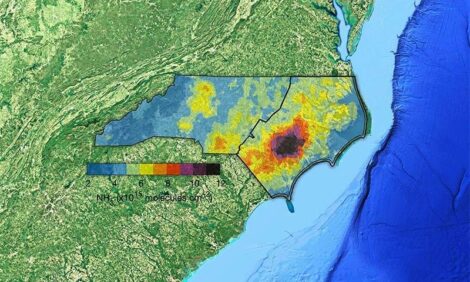



Demand Holding up in a Volatile Market
Against a back cloth of a volatile market, meat demand appears to be holding up although cheaper meat cuts have retained their popularity, writes ThePigSite Editor in Chief, Chris Harris.Speaking at the World Pork Conference in Bonn, director of market analysts Gira, Richard Brown, said that in the immediate future meat supply could be less than forecast as the industry faces serious production cost challenges from both rising feed and energy costs.
The pig meat sector in particular faces further challenges from diseases around the world, particularly PRRS in China and African Swine Fever in Russia.
Mr Brown said the current year appears to be following the events of 2007/2008 with a volatile economy producing fiscal tightening, quantitative easing and potential interest rate rises all potentially affecting the meat, and in particular the pig, sector.
Along with other events such as disease, poor weather conditions and natural disasters are making the markets even more volatile. He said the sector is holding up remarkably well.
Mr Brown forecast that global meat consumption will grow by 40 million tonnes in the decade from 2010 to 2020 and that after a two- or three-year slow start, there will be a firm recovery from the economic crisis.
However, the recovery will favour cheaper meat cuts and products.
One-third of the growth in consumption is expected to come in China and 60 per cent of the growth will be in poultry meat. However, pig meat will see the second largest growth. A rise in beef and sheep meat consumption will be limited by supply.
"Poultry production is flexible and can grow according to the strength of the market," said Mr Brown.
"However, price rises in real terms will be driven by beef and lamb."
He said the growth in poultry meat consumption is expected to be twice that of pork and larger than beef and lamb because of the constraints on their production.
"There will be more imaginative marketing of all meats, particularly more expensive meats," Mr Brown said.
China is expected to see a significant rise in pig meat production up to 2020 with the country producing nearly half the global pig meat production.
"China will have some growth in imports but it will increase production to meet demand."
Mr Brown added that the only thing than can hinder the growth in pig meat production in China will be the spread of disease, as seen recently with the outbreak of PRRS, which drove up hog prices.
Mr Brown said that there will be an increase in large scale industrialised production in China but backyard production is also expected to rise. Globally, modern commercial pig production will become increasingly specialised, preventing other countries competing on export markets.

The US will grow its pig meat exports by 2020 and the EU is also expected to grow its exports, largely to China and Asia.
However, Mr Brown said there are also a lot of growing markets around the world for exporting countries to exploit.

In the short term, there will be slower economic growth in the developing countries but there will be modest consumption growth. At the same time, meat consumption will be affected by the economic situation – particularly the rising costs of energy, fuel, fertilisers and chemicals, together with the fluctuating currency markets.
The weather conditions in the US and the EU have hit feed costs but this year, Mr Brown said, the EU harvest will not be as bad as expected. Russia has had a good harvest; the UK is also expected to have a good crop and the US has come out better than was expected in May and June.
"Although the harvests have been better than expected, feed grain prices are expected to hold up," said Mr Brown.
"There has been a lot of speculation and investment in the markets."
While the markets are volatile because of the economic crisis, diseases such as African Swine Fever in Russia, the continuing effects of Foot and Mouth Disease in South Korea and PRRS in China, together with other potential disease outbreaks, are going to have an adverse affect on the sector.
Despite this, world meat consumption growth is expected to be positive with China, Asia and South America leading the way.
Mr Brown said that the trend for pig prices is to rise around the world because of limited supplies, except in the EU. The rise in prices is also being driven by good export demand and because other meats are also seeing rises in prices.
The export conditions in South Korea and China have also supported this rise in prices and demand.
Mr Brown said that when the sow stalls and tethers ban comes into effect in 2013 in the EU, there will be some farms leaving the industry and there will be a short-term disruption to the market as the larger farms make up the short fall in production.
Overall, he said there will be an upward trend in prices for the red meat sector and the global demand for meat will also rise.
Mr Brown said there is also a tendency for the large meat companies to be moving into multi-species operations as they spread their interests across the market.
"However, we are not going to be awash with cheap meat in the industry in the future," he concluded.
October 2011







